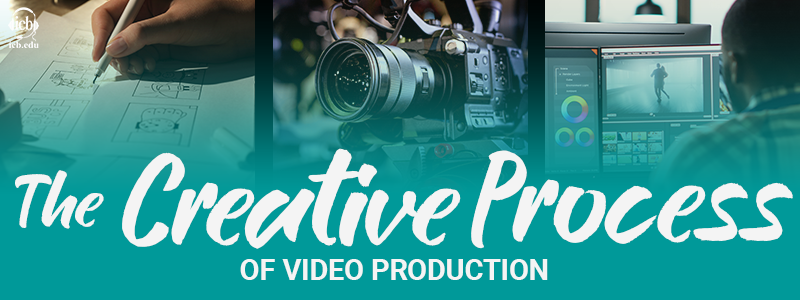
The Creative Process of Video Production
If you’ve ever wondered what goes on behind the scenes of your favorite videos, or you’re thinking about diving into the exciting world of video production yourself, you’re in the right place. Today, we’re taking a deep dive into the wild and wonderful creative process of video production. Just remember the three Ps: Pre-Production, Production, and Post-Production.
1. Conceptualization: Get Inspired
This is a part of the pre-production phase. It’s called inspiration, brainstorming, ideation, or “Hey, I got an idea.” The quirkier, the better. Whatever or however you think of it, this is where the magic begins.
BUT don’t be surprised if your initial idea changes, evolves, or even takes a completely different direction. That’s the beauty of creativity—there are no rules!
2. Pre-Production: Make a Plan
Once you’ve got your concept, it’s time to put on your producer hat and start planning. This phase involves creating a script, storyboarding, scouting locations, and assembling your team. Film and video work is a team sport. You can do things by yourself, but it’s much more fun when you’re working with people who can share your vision.
Collaboration is key here. Make sure everyone’s on the same page, and you have a detailed plan to follow as you move forward.
As you work with directors, writers, cinematographers, actors, and other talent, you will need to also investigate where you’ll be shooting and what you need. This is the part of production where you focus on the nouns of the project: people, places, and things. Set them up, and make sure everyone is in communication.
3. Production: Lights, Camera, Action!
Now comes the fun part – shooting your video. This is where all your planning and hard work start to pay off. You’ll be dealing with lighting setups, camera angles, sound equipment, and the talent that brings your script to life.
Remember, not everything will go perfectly, and that’s okay. Embrace those unexpected moments – sometimes they lead to the most memorable shots.
Organize your production day by day. Be efficient in identifying locations and how long it will take to shoot one scene, one sequence, and one shot. Depending on the set up, it takes about 4 hours to shoot a short scene.
4. Post-Production: Excellent Editing
After wrapping up the shoot, it’s time to bring all those pieces together in the editing room. Editors work their magic to piece together the shots, add music, sound effects, and special effects if needed.
It’s like assembling a jigsaw puzzle but with more flexibility. You have the power to rearrange scenes, add filters, and create the mood you envisioned during the first phase of the process. However, focus on the story. What do you want the audience to feel? What do you want the characters to do? What is the message?
Refining your story will take longer than you think. Take all the time you need in post-production. There is a lot of magic in the process.
5. Distribution: Share Your Masterpiece with the World
Congratulations! It’s time to share your video with the world. Distribution is important as you assess where you should go with your final cut. Whether it’s a short film, a marketing video, or a vlog, distribution is a crucial step. Upload it to video-sharing platforms, submit it to film festivals, or use it for marketing/advertising.
Remember, promotion is just as important as production. Use social media, email marketing, and word-of-mouth to get your video in front of the right audience.
You can also use other platforms like YouTube, Vimeo, and TikTok. These are great distribution channels, but you might want to submit your piece to film festivals. This is the best exposure you can get and the best way to get feedback and network. There are several film festival platforms to submit your work and there are thousands of film festivals. The best place to find those film festivals is filmfreeway.com.
6. Feedback and Improvement: Keep on Learning
Feedback is your best friend in the video production process. Don’t be discouraged by criticism; instead, use it as a steppingstone for improvement. Every great filmmaker started somewhere, and every video is a learning experience.
Seek input from colleagues, friends, and even strangers. Their perspectives can help you grow and refine your craft.
7. Rinse and Repeat
Guess what? Once you’ve completed one video, the creative cycle starts all over again. Inspiration strikes, ideas evolve, and the process repeats itself. That’s the beauty of video production – it’s a never-ending journey of creativity and learning. You will find yourself refining your craft and skill set and finally settle into a niche.
Check out ICB
If you’re interested in learning about the exciting world of video production, ICB can prepare you for a rewarding career with our Video Production & Audio Engineering program. To learn more, contact us or give us a call at 855-896-3733.

